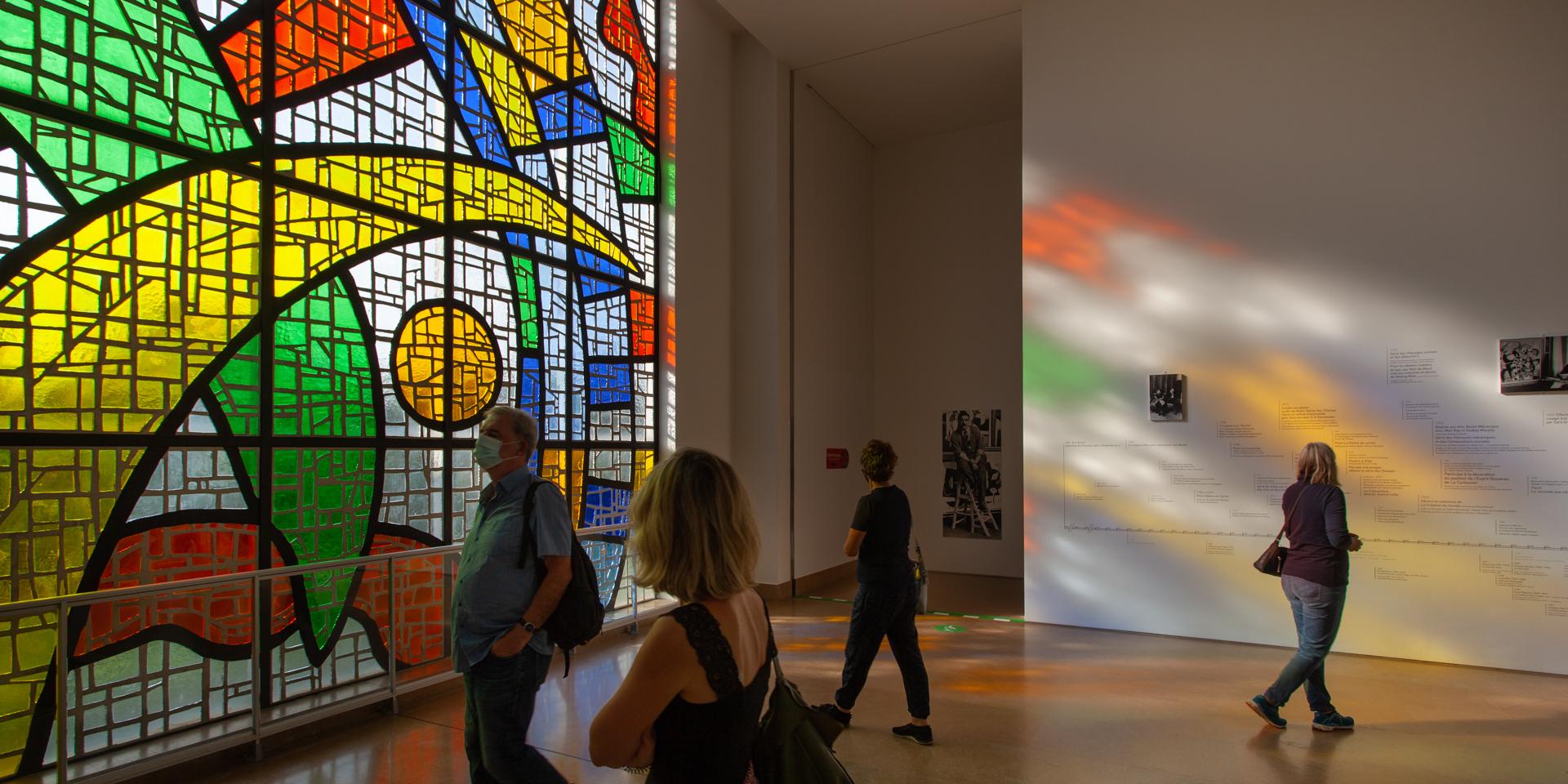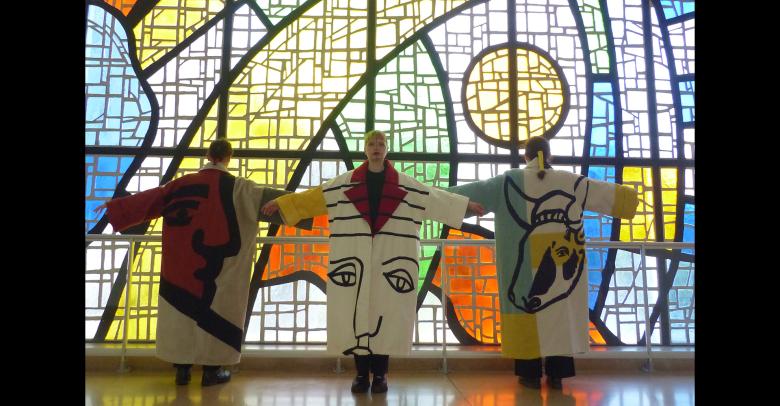Considered one of the great figures of modern art, Fernand Léger is a French painter whose rich and coherent work spans the first half of the 20th century.
1881-1917
From birth to combat: the Cubist effervescence
Nothing predestined Fernand Léger, the son of a Norman cattle breeder, to become a leading figure in the Parisian avant-garde. Not very studious but a good draughtsman, he worked as an apprentice to an architect in Caen.
At the age of 19, he went to Paris and studied with the painter Gérôme at the Ecole des Beaux-Arts. In 1907, a decisive year for him, Léger moved to La Ruche in the artistic effervescence of Montparnasse, where he became friends with Robert Delaunay, Marc Chagall, Blaise Cendrars...
Introduced to cubism by Cézanne, he quickly forged his own style on the fringes of Braque and Picasso's research. In order to transcribe the dynamism of his time, he developed a painting based on contrasts of form and colour, the keystone of his aesthetic which no later development would call into question.
He exhibited at the Salons d'Automne and des Indépendants and participated in the group La Section d'Or. In 1913, the dealer Daniel-Henry Kahnweiler offered him an exclusive contract.
His departure for the war in August 1914 marked an abrupt break. At the front, Léger drew on makeshift supports, before being hospitalised and then discharged in 1917.
1918-1930
Painting modern life: cities, machines and objects
After the war, the themes of the city and the machine became the focus of the painter's attention. Inspired by modern life, Léger advocated a "new realism", in tune with the plastic beauty of industrial civilisation. Aware that painting was competing with the spectacle of the big city, he integrated urban signals and mechanical motifs into his compositions, while the human figure, desensitised and standardised, was reduced to geometry.
In the 1920s, numerous collaborations allowed the painter to open up to other fields of creation: literature, live shows, architecture, etc. Fascinated by the cinema, Léger worked with the directors Abel Gance and Marcel L'Herbier. Above all, he made Le Ballet mécanique (1924), considered to be "the first film without a script", an experience that encouraged him to use the principle of the close-up in his paintings. The object, which had become the central subject of his works, was freed from gravity in the series Objects in Space.
1930-1939
Classicism and decorative art: the return to the figure
Internationally recognised from the 1930s onwards, Fernand Léger exhibited in Europe and the United States, where he travelled on several occasions. From that time on, his pictorial research moved away from mechanistic aesthetics to become part of the great pictorial tradition.
His works show a return to the figure and the development of decorative research, in dialogue with architecture. In the spirit of the Popular Front, Léger took a stand during the debates on the Querelle du Réalisme, organised by Aragon at the Maison de la Culture in Paris.The year 1937 was marked by his participation in the International Exhibition of Arts and Techniques.
1940-1945
American exile: colour outside
At the beginning of the war, Léger fled France for New York, "the greatest show on earth". This American period was particularly creative. With The Divers and Cyclists series, Léger invented the principle of colour outside, by which he dissociated colour and form. He taught at Mills College in California and set up his studio in New York in the winter and at Rouses Point in the summer. He met up with his exiled friends such as the composer Darius Milhaud and the painters in Pierre Matisse's gallery.
In 1945, Fernand Léger joined the French communist party and returned to France. On his return, he returned to his studio on rue Notre-Dame-des-Champs and opened a new school in Montrouge, then in Paris.
1946-1955
The last years. The monumental projects
At the end of his life, Léger, driven by the ideal of art for all, embarked on numerous monumental projects, for commissions of sacred art (Assy chapel, Sacré-Coeur church in Audincourt...) or public buildings (Caracas university, UN palace in New York...).
His series, such as La Grande Parade and La Partie de campagne, are fundamentally optimistic and evoke the world of leisure and social progress. The year 1950 was marked by the Constructeurs series, which was the subject of numerous studies. His album Cirque was published by Tériade at the same time. From 1949 onwards, Fernand Léger regularly went down to Biot (Alpes-Maritimes) to work with the Brice workshop on polychrome ceramic sculptures.
The painter died on 17 August 1955 in Gif-sur-Yvette.
In 1960, Nadia Léger, his widow, and Georges Bauquier, his assistant, inaugurated the Fernand Léger National Museum, on the land bought by the artist just before his death, at the foot of the village of Biot.
Visual: The public in front of the large stained glass window of the Léger Museum, made from a model by Fernand Léger for the University of Caracas (Venezuela), around 1950. Made during the work undertaken to enlarge the museum, by the Ateliers J. Photo: Nice, the National Museums of the 20th century in the Alpes-Maritimes / Gilles Ehrentrant © ADAGP, Paris, 2023.


